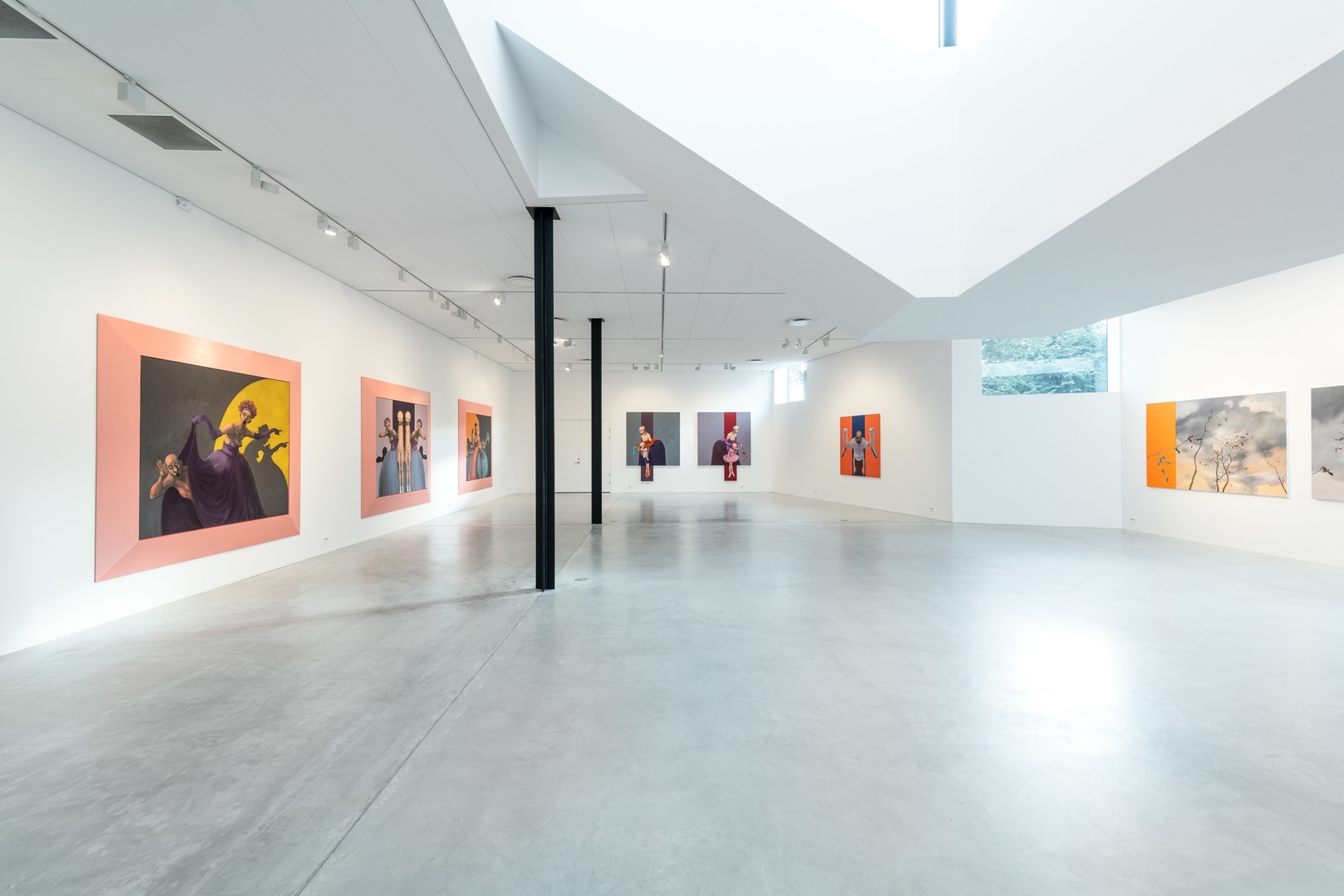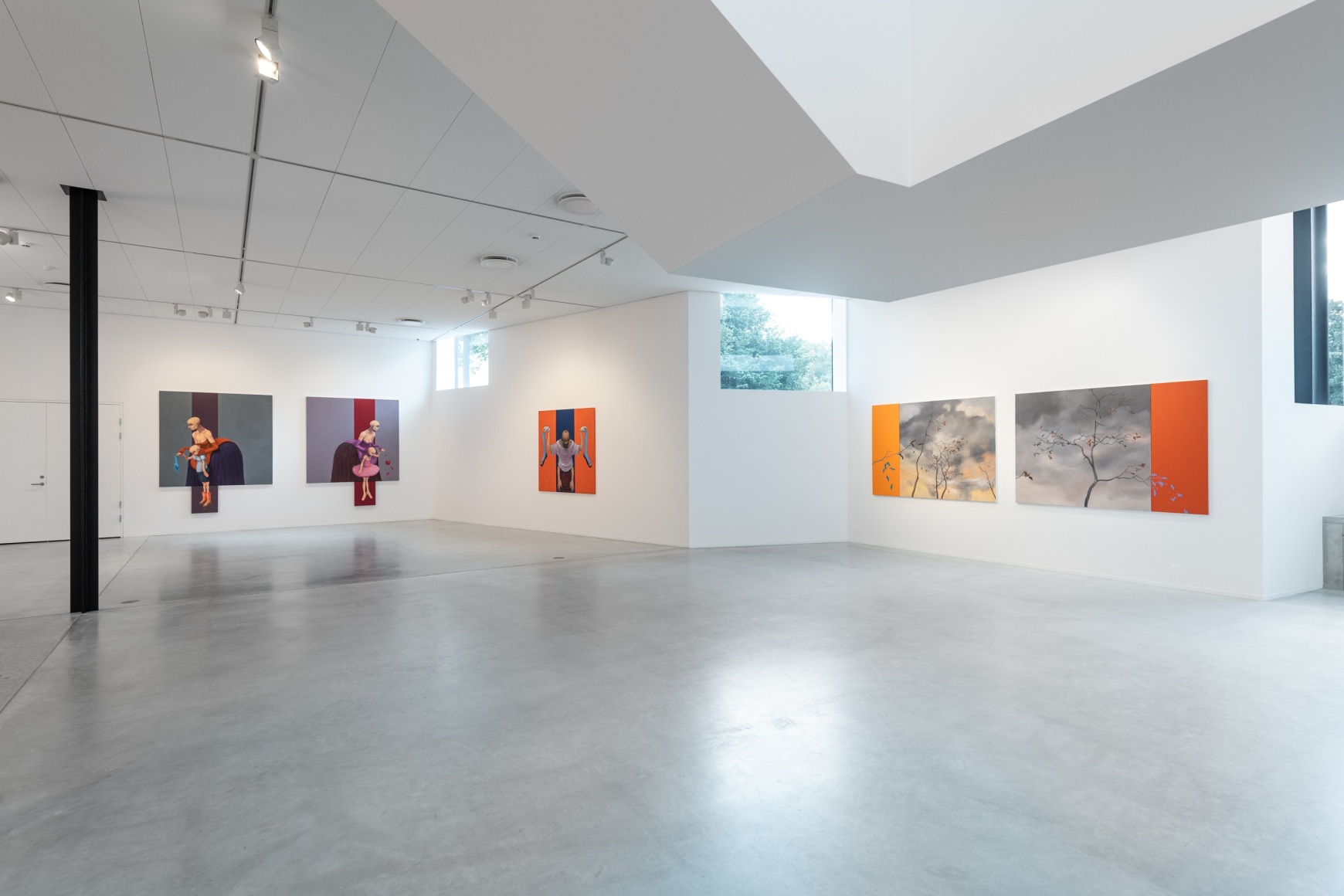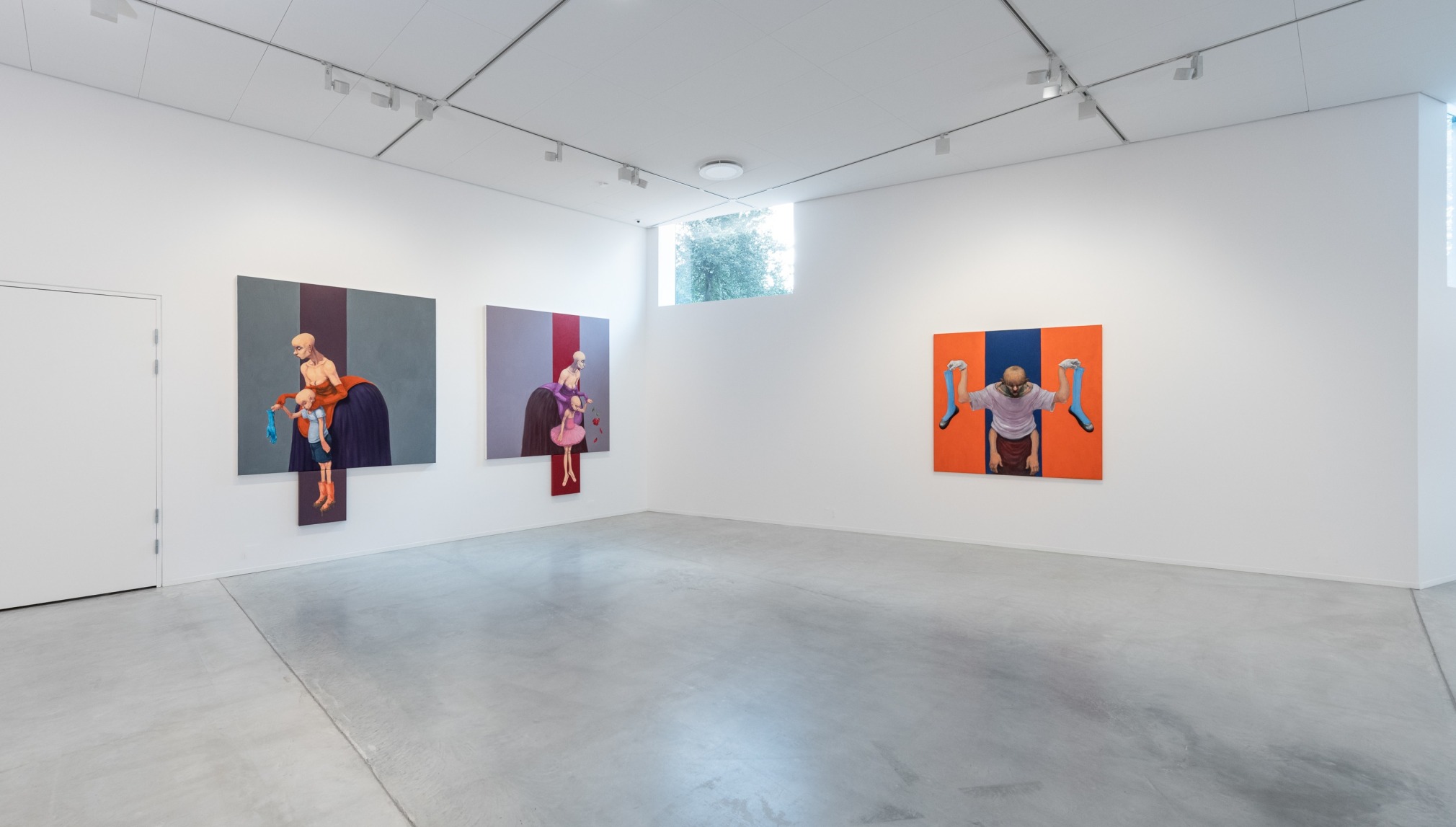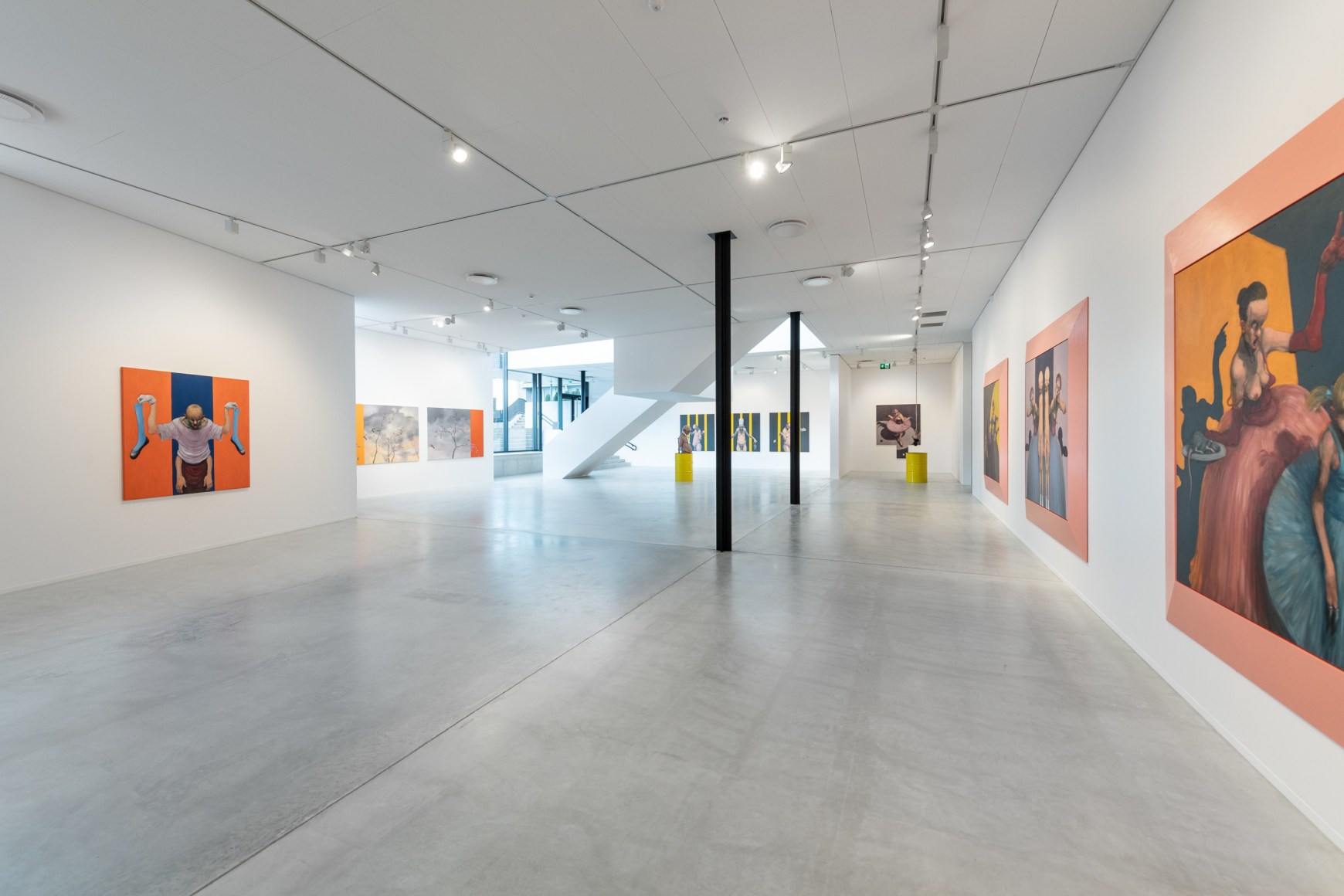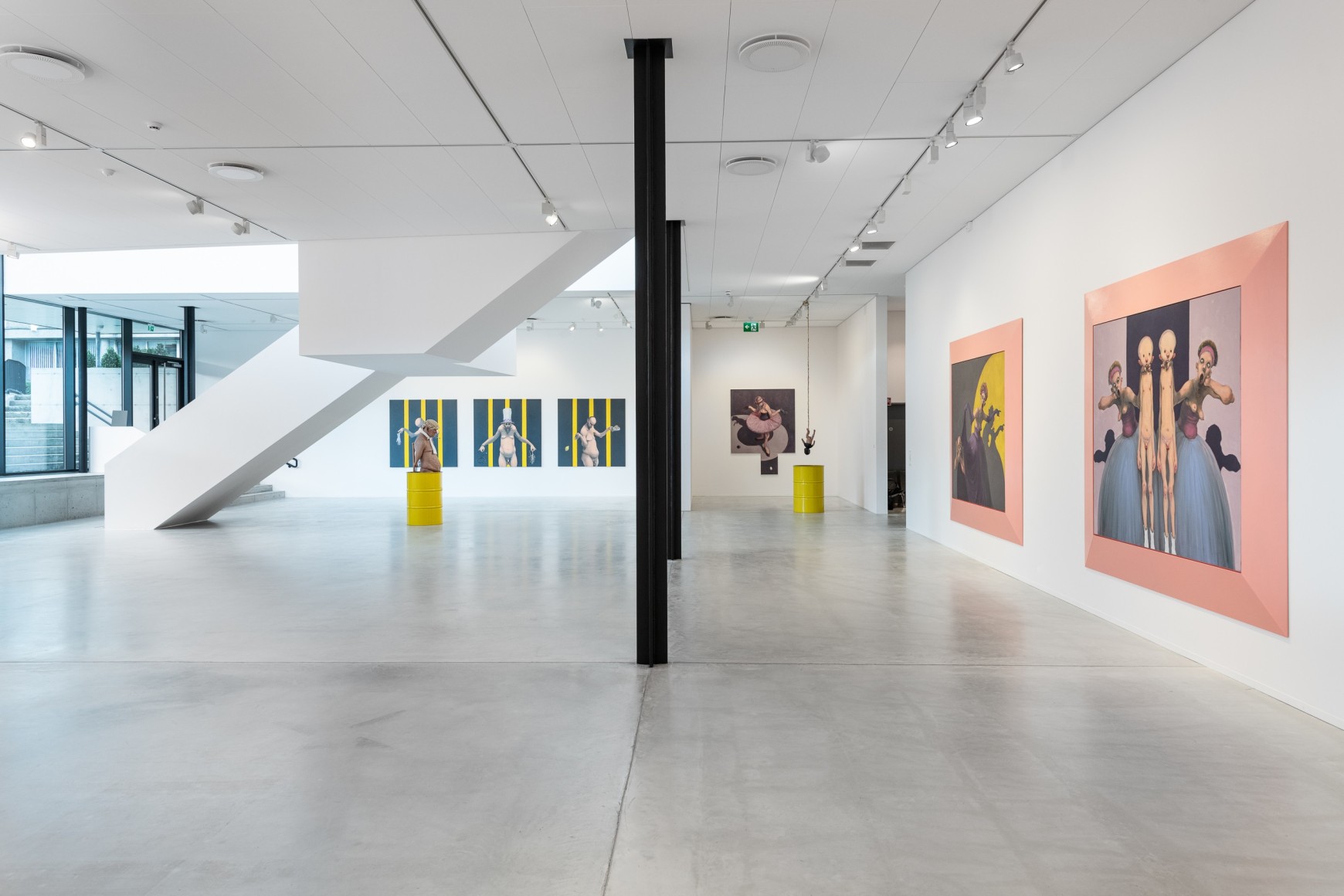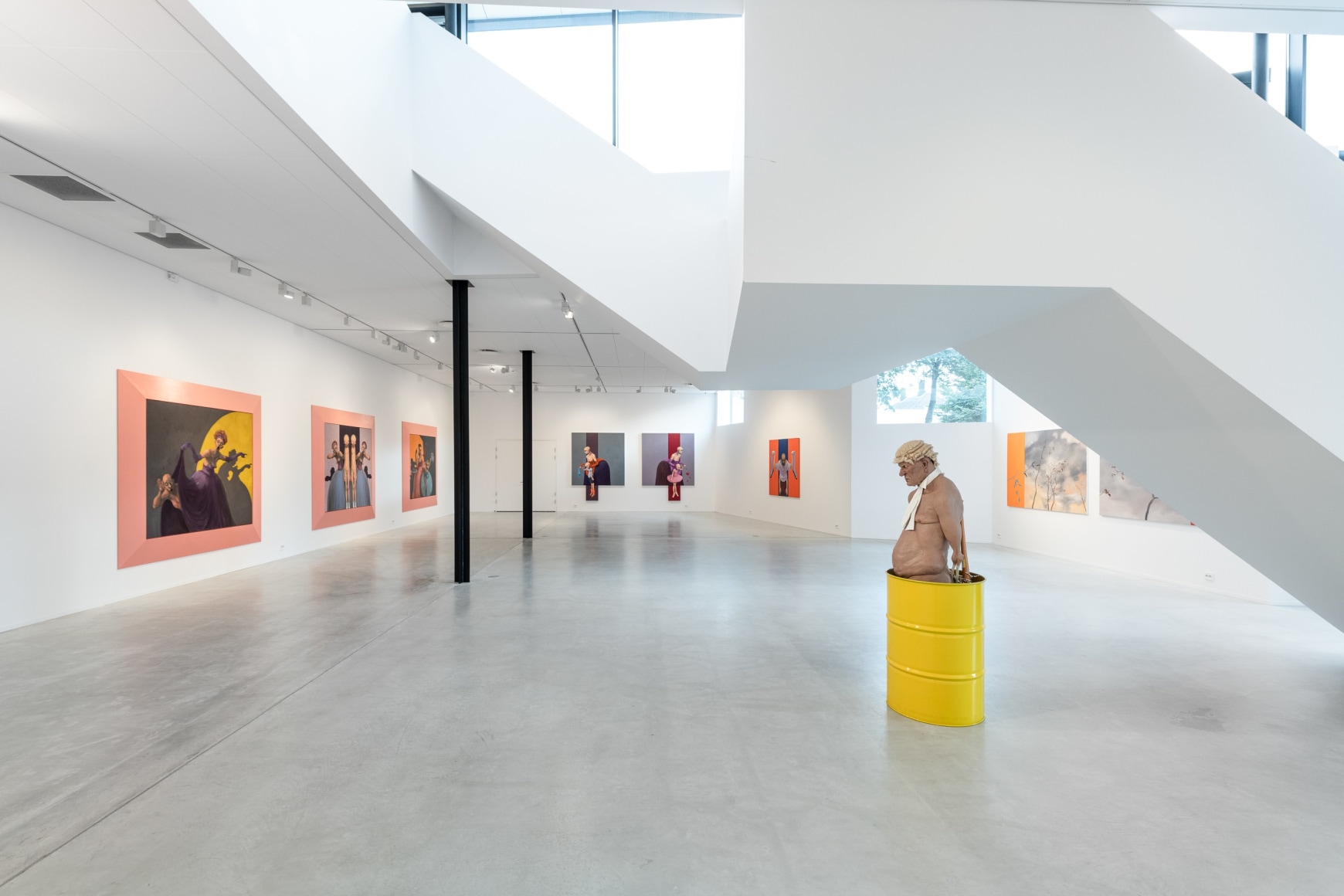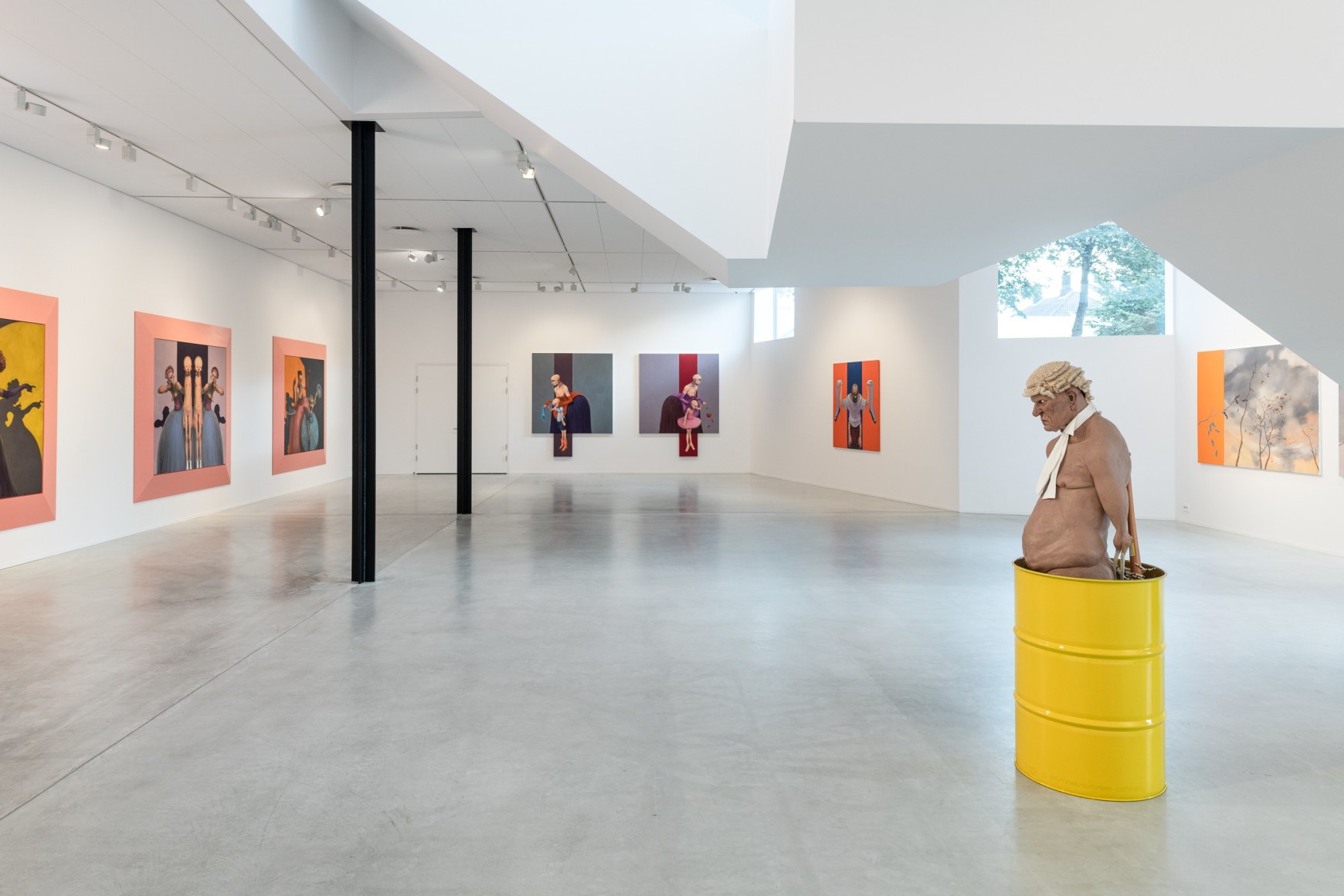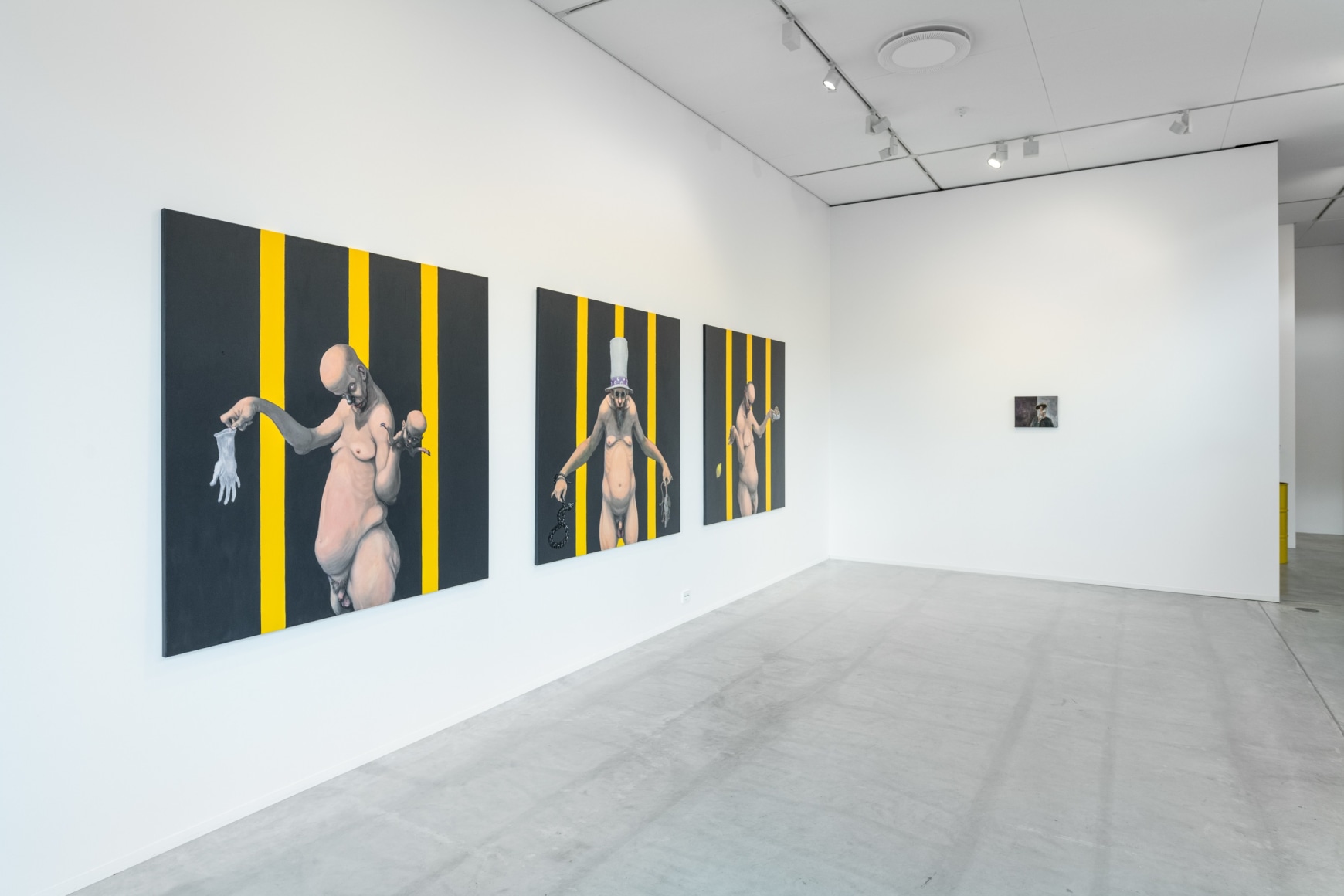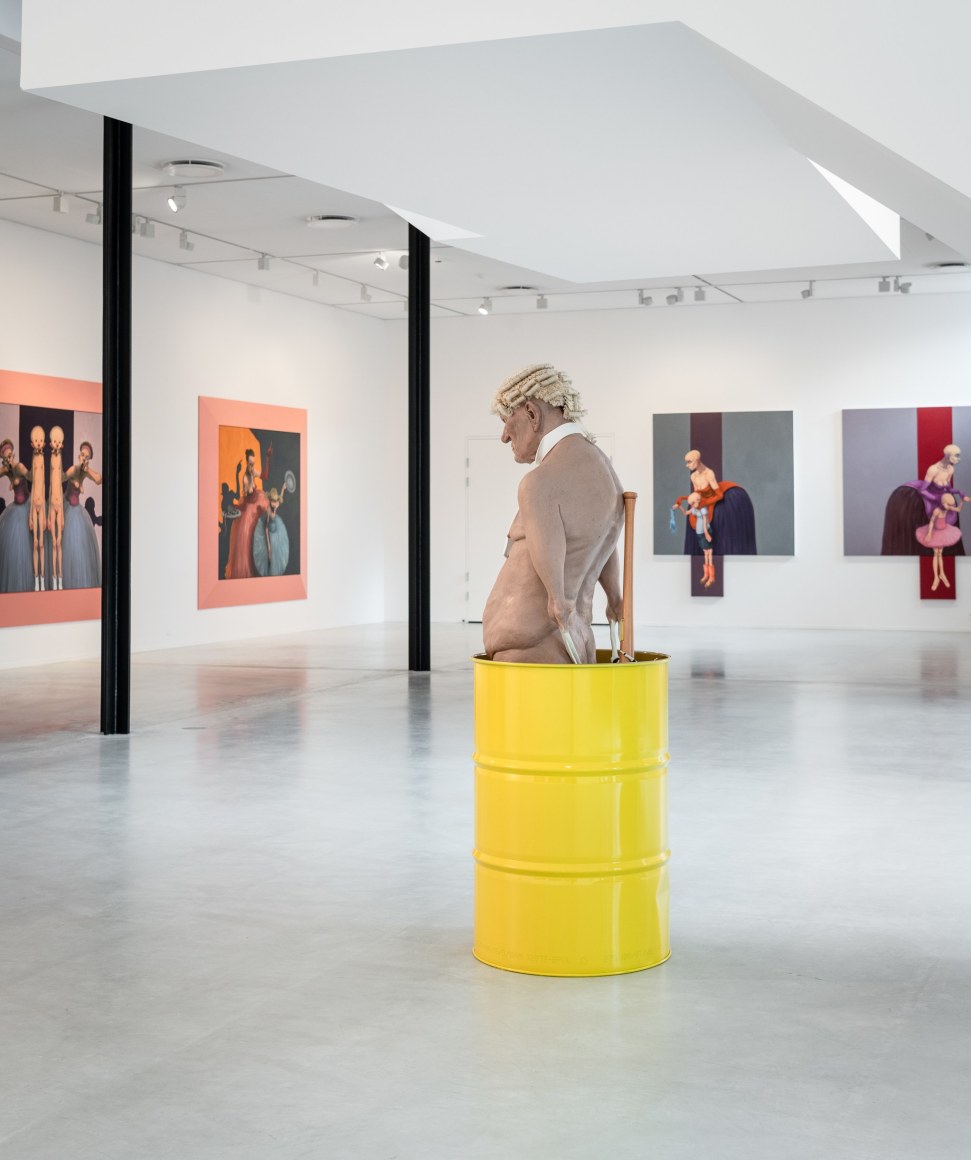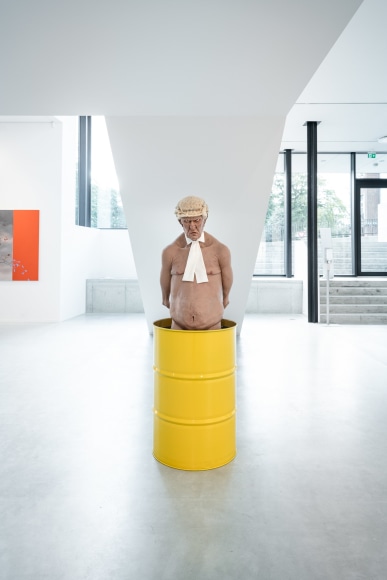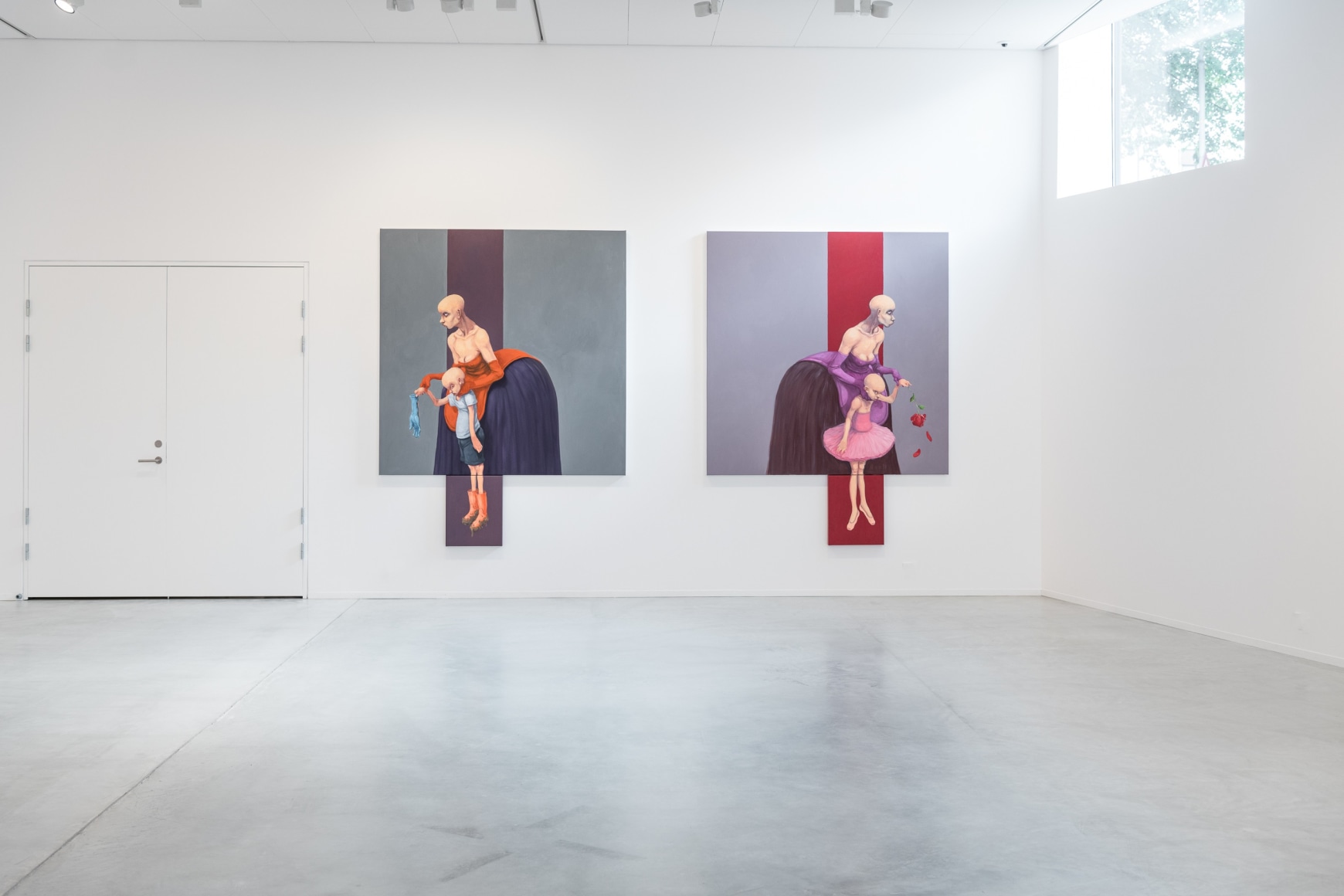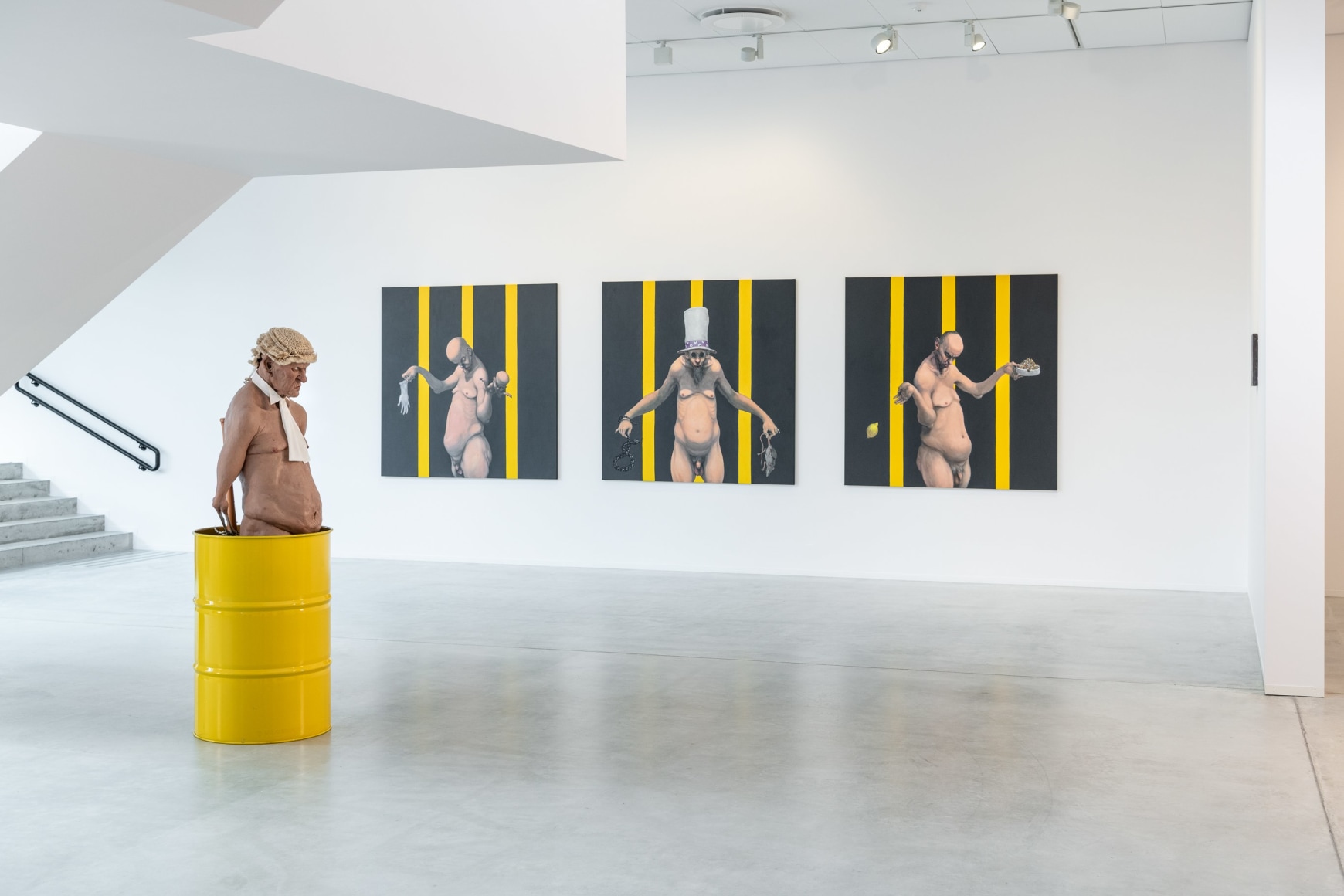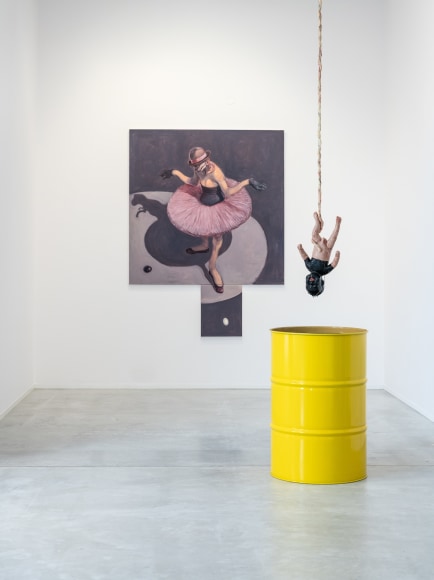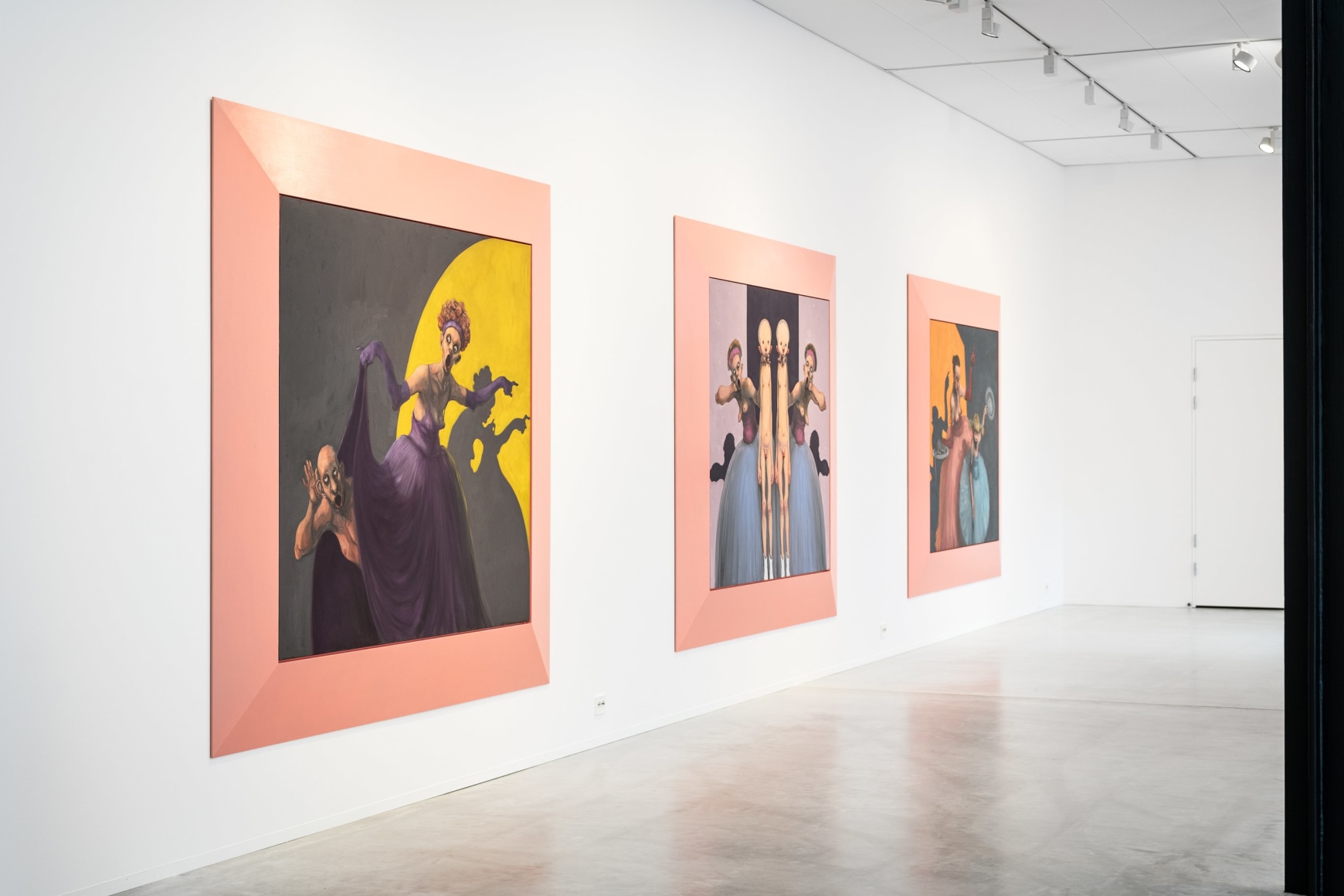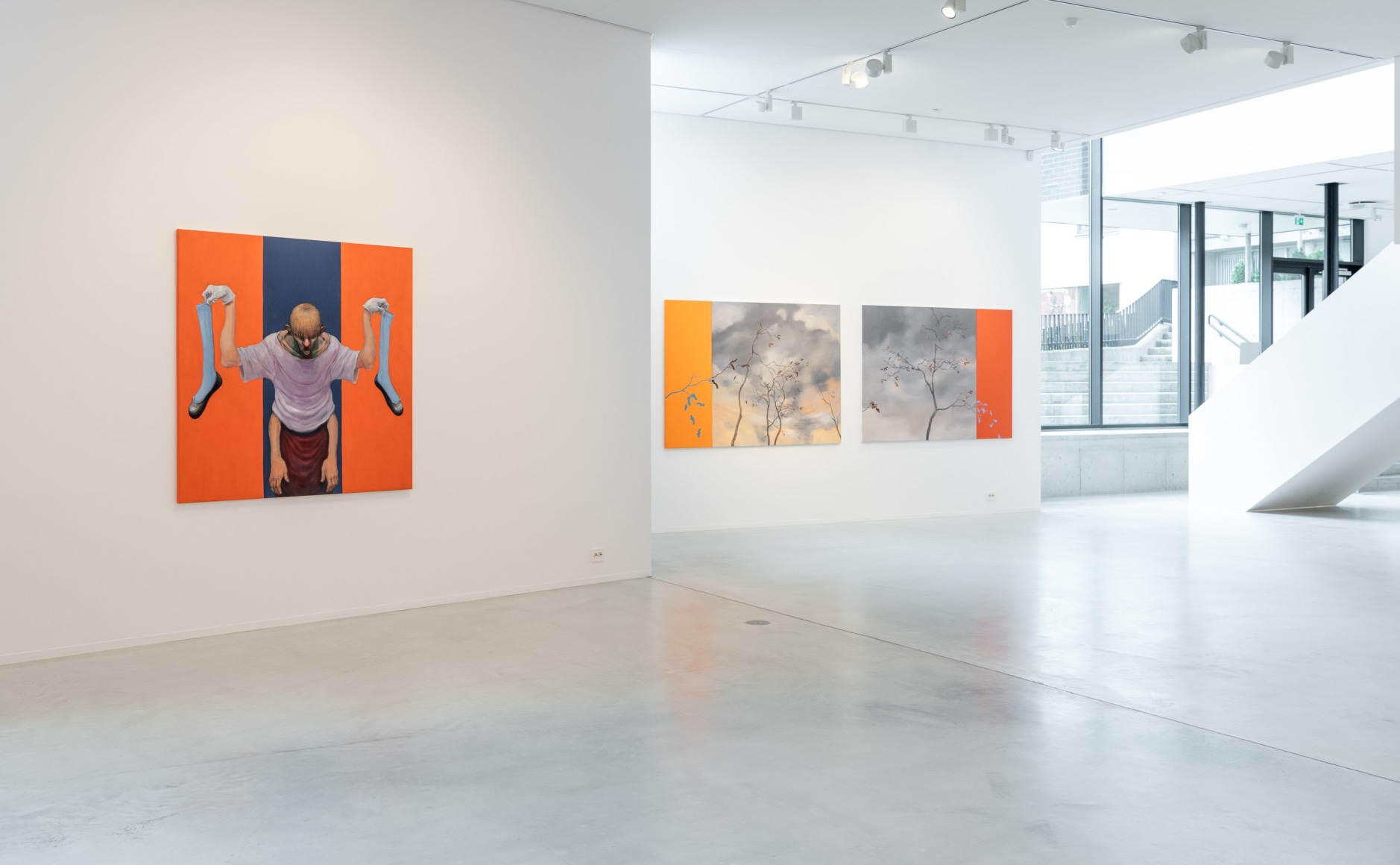Kvium’s art deals with existential subjects, and shows uncompromising portrayals of the aspects of life that we rather hide than expose to observation; I call 3 larger works “ tap scenes" with the completely hidden reference to the concept "Soap Opera", we know from TV productions. Something mundane that continues indefinitely and superficially smooth on the surface. Soap is usually something we associate with cleanliness, but it is also something we can slip into and fall to the ground. We speak figuratively of washing our hands when we renounce responsibility. In soap-coloured frames, I have painted visual soap-operas based on everyday-like scenes in paradoxical situations. When the unbearable blindness of everyday life is peeled off, we are left with a reality that most often questions the boundaries we stay within or cling to.
Michael Kvium’s painterly staging contains associations to a theatre stage. As a theatre plays a story that unfolds in the interval between the curtain rise and fall, human life unfolds between life and death; “The performative language and the theatrical compositions are fundamental to my work as an artist. In the three works "Naked Act", the characters present a few objects, detached from their known reality and therefore made visible as a reference to or as a question about the object’s layers of meaning. Is an ashtray or does it point to other layers of narratives?” The artist reflects.
Nature is an ongoing focus in Kvium’s art, which counts human features, as well as human nature and its feelings. Kvium’s human portraits portray stretched limps and overdone features. This is carried on to his landscapes, almost as if the barren trees have human characteristics. The barren trees are also, similarly to the human figures in his portraits, alone and isolated.
“The landscape of horizon is for me an eternal hidden source of astonishments. This gaze towards eternity with partially bare trees as the only sign of earthly life. It is almost always autumn or winter scenes that melancholy point to the past summer and into the barren winter hibernation. What are we humans other than "Dark Souls" in an eternal search for the light and understanding of the unpredictable, which here is materialised in the infinite space of eternity.”
One can see resemblances between Kvium´s landscapes to the landscape paintings of the Romantic area, where painters reflected their inner feelings in their depictions of nature. In their landscape paintings, they focused on the aesthetic concept of the Sublime. Sublime - wild nature: vast and powerful, inspiring terror and awe. Scholars have debated the term ‘sublime’ in the field of aesthetics for centuries. Many more artists, writers, poets and musicians have sought to evoke or respond to it. But what is the sublime? The word, of Latin origin, means something that is ‘set or raised aloft, high up’. The sublime is further defined as having the quality of such greatness, magnitude or intensity, whether physical, metaphysical, moral, aesthetic or spiritual, that our ability to perceive or comprehend it is temporarily overwhelmed.
During the process of creation, artists have a constant internal dialogue with what arises within the artwork work, so that the viewer is also confronted with the final work. The precondition for such a dialogue is experience. An experience, both the known and the unrecognized, that can be both collective or deeply personal. In this encounter with art, we will most often be confronted with some unanswered questions, seeing a different reality that can both attract and disgust. In other words, we are alone in trying to understand the reactions we experience. Maybe it's our perception of reality, our idea of what is right or wrong, beautiful or ugly and good or bad that is at stake. Real art will always be able to bring us out of composure. Out of the stuck performances.


